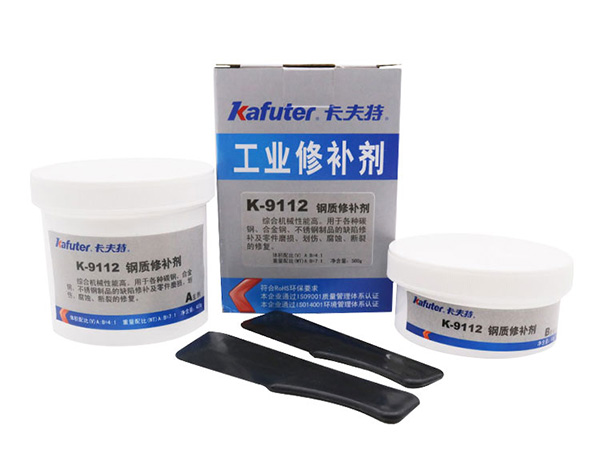In recent years, with the strong support of national policies, China's electronic information industry has been developing, its technical level has been improving, and its industrial scale has been expanding. At present, China has become the world's third largest manufacturer of electronic information products, and the electronic industry has become a pillar industry of the national economy. China ranks first in the world in the output of major products such as computers, mobile phones and color TV sets, and its position as a major manufacturer of electronic products is becoming increasingly prominent.
Driven by the electronic information industry, China's electronic glue market develops rapidly. According to the 2017-2022 China Electronic Glue Industry Market Demand and Investment Advisory Report released by Xinsi Industry Research Center, the market scale of China's electronic glue industry has reached 9.17 billion yuan in 2016, with a year-on-year growth of 12.1%.
Room temperature vulcanized silicone rubber or silicone gel used for sealing electronic and electrical components, can play the role of moisture-proof, dustproof, anti-corrosion, shock-proof, improve the performance and stability parameters, and it is liquid before vulcanization, easy to perfusion, easy to use. When the silicone gel is used for filling and sealing, it does not release low molecules, has no stress shrinkage, can be deeply vulcanized, without any corrosion, and becomes a transparent elastomer after vulcanization. The components encapsulated in the rubber layer can be clearly visible, and the parameters of the components can be measured one by one with the needle, which is convenient for detection and repair. Generally, the surface protection coating of electronic components is made of room temperature vulcanized silicone rubber, which is coated internally with molded silicone gel. In 2016, the output of silicone rubber accounted for 38.7% of electronic adhesives.
EVA hot melt adhesive is a copolymer of vinyl and vinyl acetate, is a thermosetting hot melt adhesive, is currently widely used in solar cell module packaging bonding materials. It and glass adhesion can improve the transmittance of glass, play the role of anti-reflection, and has a gain effect on the power output of solar cell modules. In 2016, the output of EVA hot melt adhesive in electronic glue accounted for 31.0%.
Development Direction and Challenges of Electronic Glue Industry
The multiple functions of glue is one of the important signs of the progress of the glue industry, such as the realization of the material connection at the same time, but also to achieve a conductive role. This also includes the electrical conduction that substitutes the solder function and the electrical conduction that provides the grounding function. Solder is the traditional wire connection, so that it can realize the connection mode of conduction, but its shortcomings are often relatively large solder joint, occupy a high space, in the case of increasingly thin electronic components, the use of limited. In addition, its connection depends on high temperature melting, so the product has to withstand high temperature process, for those can not withstand high temperature components or products, there is no realization. For this reason, conductive adhesive can replace solder, that is to overcome its shortcomings, and realize the dual role of connection and conduction. Of course, conductive adhesive according to its curing mode can be divided into heating curing, room temperature curing. Even if it is heated curing, the curing temperature of the general conductive glue will not exceed 150 degrees. In recent years, there are even low-temperature curing conductive adhesives on the market, whose heating temperature does not exceed 80 degrees, which makes the application of conductive adhesives more extensive. Generally speaking, for conductive adhesive with earthing function, it often requires high bonding fastness and fast curing speed, because its conductive particle content is not high, so the cost will be relatively low. However, the cost is an important factor restricting the promotion of conductive adhesive. How to develop low resistivity, low cost, high bonding strength of conductive adhesive is the direction of efforts of suppliers.
The continuous highly integrated, miniaturized, multi-functional and high-power electronic products make energy consumption/heat management become more and more prominent problem! These highly integrated components should not only be securely assembled on the PCB board, but also the heat generated by their work should be quickly dissipated. Sometimes an additional radiator is attached to the surface of the component for cooling. In this case, thermal conductive glue is the choice. The heat conduction of glue can be understood from two different aspects: heat removal and heat absorption, such as adhesive heat sink glue should be able to quickly remove the heat; The thermal glue that protects the NTC temperature sensor should quickly absorb the heat and transmit it to the chip. This is actually two aspects of the same problem, therefore, the problem of thermal conductivity glue is the constant pursuit of high thermal conductivity and bonding fastness of the contradiction; There is also the effect of heat conduction particle material added to achieve heat conduction on sizing process and rheological properties of glue.
There are a variety of failure modes of electronic products, one of which is due to the greater external force, resulting in its components from the motherboard, or PIN foot cracking and can not work normally, such as FPC after bending and motherboard connected due to the elasticity of the FPC and there is a long-term peeling force, under the long-term action of this peeling force, The conductive ACF that makes the connection produces unglued. Another example is the large capacitance in the fall process due to the great instantaneous impact force resulting in PIN foot cracking. To this end, the parts that may fail should be reinforced. A simple and effective way is to use glue for reinforcement, which includes the reinforcement of FPC, the reinforcement of large electronic devices such as capacitors, and the four corner binding of large chips. This kind of glue generally has a fast curing speed, good thixotropy, high bonding strength and good impact resistance and vibration resistance.
With the continuous extensive and in-depth use of industrial glue in various industries, its functions are becoming more and more diversified, and show that different industries also have their own demand characteristics, showing obvious special functions related to industry or product performance, these special functions have put forward new requirements for glue. For example, in the optical and optical communication industry, it is required that the glue should have a very low shrinkage rate, good yellowing resistance, and the transmittance in a certain band should reach a certain index; Again, if some products related to acoustics, we also hope that glue has certain functions of noise reduction and acoustic optimization. Also such as some industries are eager to have long-term temperature resistance of 150 degrees or 180 degrees of UV glue and so on. Through the above analysis, it can be seen that glue, as a traditional connection mode, is increasingly diversified and multi-functional in the modern manufacturing industry, and this trend has injected infinite vitality and life to the adhesive industry, but also put forward a new challenge.

